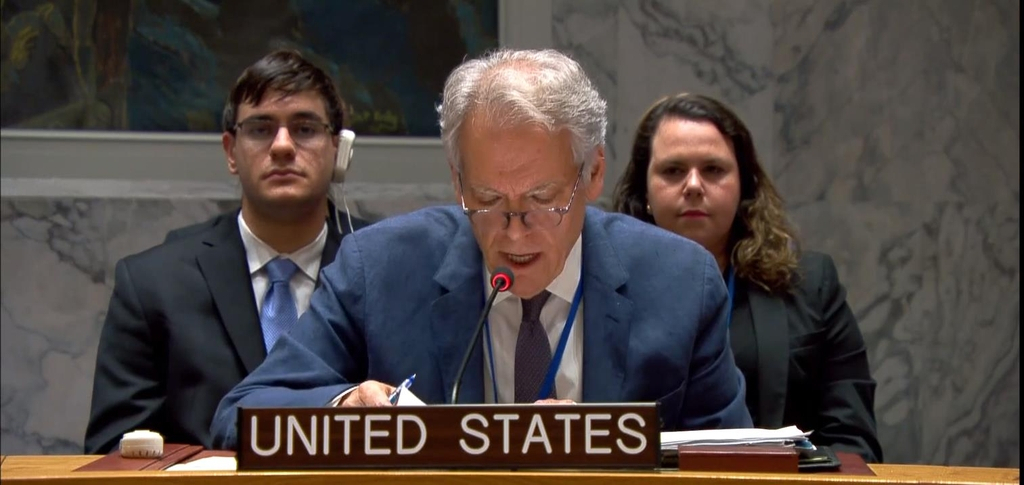您现在的位置是:半岛新闻网 > 资讯
NASA can finally touch the 'rarest' rocks on Earth
半岛新闻网2024-09-22 01:28:07【资讯】2人已围观
简介Two little screws almost ruined the ending of NASA's seven-year space journey to asteroid Bennu and
Two little screws almost ruined the ending of NASA's seven-year space journey to asteroid Bennu and back.
But after more than three months of trying to pry the lid off a can containing the bulk of rocks and dust from the asteroid, engineers have finally done it. To remove the stuck top, they made and tested new tools that could safely unscrew the fasteners without damaging the precious sample.
Prime Day deals you can shop right now
Products available for purchase here through affiliate links are selected by our merchandising team. If you buy something through links on our site, Mashable may earn an affiliate commission.iRobot Roomba Combo i3+ Self-Emptying Robot Vacuum and Mop—$329.99(List Price $599.99)
Samsung Galaxy Tab A9+ 10.9" 64GB Wi-Fi Tablet—$178.99(List Price $219.99)
Apple AirPods Pro 2nd Gen With MagSafe USB-C Charging Case—$199.00(List Price $249.00)
Eero 6 Dual-Band Mesh Wi-Fi 6 System (Router + 2 Extenders)—$149.99(List Price $199.99)
Apple Watch Series 9 (GPS, 41mm, Midnight, S/M, Sports Band)—$299.00(List Price $399.00)
So far the science team has only seen grainy cell phone pictures of the sample, said Andrew Ryan, a co-investigator on the NASA mission, but better photos are expected next week.
"We are all delighted by what we’ve seen inside," Ryan told Mashable.
SEE ALSO:NASA needed help with a mission. The Vatican came to the rescue.Tweet may have been deleted
NASA's $800 million OSIRIS-Rex mission, short for Origins, Spectral Interpretation, Resource Identification, and Security Regolith Explorer, launched a robotic spacecraft from Cape Canaveral, Florida, in 2016. It completed its 4-billion-mile flight when it dropped from 63,000 miles above Earth onto a patch of isolated Utah desert on Sept. 24, 2023.
OSIRIS-Rex is the first U.S. mission to retrieve a sample of an asteroid and return it to Earth. Not since the Apollo moon rocks, collected between 1969 and 1972, has NASA brought back space souvenirs of this magnitude.
Bennu was selected for the mission because it is chock-full of carbon, meaning it could contain the chemical origins of life. It also has a very remote chance of hitting Earth in the next century. Learning about the asteroid could be helpful in future efforts to deflect it, should that become necessary. Bennu was also considered a convenient asteroid destination because every few years it crosses Earth's orbit around the sun, making it easier to reach than some other asteroids.
 Asteroid bits coat the base of the OSIRIS-Rex sample canister. Credit: NASA / Erika Blumenfeld / Joseph Aebers
Asteroid bits coat the base of the OSIRIS-Rex sample canister. Credit: NASA / Erika Blumenfeld / Joseph AebersThrough the OSIRIS-Rex spacecraft, the team saw so-called "hydrothermal mineral deposits" on Bennu they believe may have occurred early in solar system history.
These long veins of salty material could suggest a hydrothermal system similar to what exists at Earth's mid-ocean ridge. It's an intriguing environment where geologists think origin-of-life chemistry may have begun for our own planet. This kind of material hasn't shown up in Japan's Ryugu asteroid sample, which flew back to Earth in 2020, or any meteorites found on Earth.
That's why Jim Garvin, chief scientist at NASA's Goddard Space Flight Center, meant his words literally when he said in September: "This is the rarest stuff we've ever had on Earth."
Scientists paused their efforts to open the sample container in mid-October after they realized two of the 35 fasteners could not be removed with the tools approved for use inside the OSIRIS-Rex glovebox.
Related Stories
- NASA needed help with a mission. The Vatican came to the rescue.
- How NASA's asteroid sample survived despite a parachute flop
- How asteroid Bennu got its odd name and other facts
- NASA's dropping off a space package from 63,000 miles high
- NASA just flew home its first asteroid chunks from outer space
To prevent contamination of the sample, NASA's curation team had set stringent rules about what could go inside the glovebox. Only about 15 materials were approved, such as stainless steel, aluminum, and glass. Motors, computers, and circuitry were strictly prohibited.
"This is the rarest stuff we've ever had on Earth."
 On the right side of this image, pieces of asteroid Bennu are visible atop the sample collector.Credit: NASA / Erika Blumenfeld / Joseph Aebersold
On the right side of this image, pieces of asteroid Bennu are visible atop the sample collector.Credit: NASA / Erika Blumenfeld / Joseph AebersoldImmediately after encountering the problem, NASA started making new tools. Two were developed with a specific grade of surgical, non-magnetic stainless steel — the hardest metal approved for use in the pristine curation glovebox.
"These new tools also needed to function within the tightly-confined space of the glovebox, limiting their height, weight, and potential arc movement," said Nicole Lunning, OSIRIS-Rex curator, in a statement. "The curation team showed impressive resilience and did incredible work to get these stubborn fasteners off."
Scientists already swept up some of the dust and rocky bits that leaked into the external container for analysis, almost 2.5 ounces' worth, which exceeded NASA's goal. Portions were shipped off to institutions around the world for studies.
Soon they'll know the total amount of Bennu material they captured by weighing the rest of the contents.
Featured Video For You
NASA spacecraft gets extremely close to volcanic world, snaps footage
很赞哦!(81)
相关文章
- A Journey Into the Mind of Stephen King
- Torrential rains leave 2 dead, one missing, thousands evacuated
- Tesla recalls 16,000 Model S and X cars over seat belt issue
- COVAX allocates 1.29 million additional COVID
- Spaceship tech slashes energy usage of existing AC systems
- Guerreiro joins Bayern on free transfer
- Time to reset S. Korea
- Rescuers race to find Haiti quake survivors as tropical storm approaches.
- 12 Places that Celebrate Women in Science
- Tesla workers push to unionise in New York
热门文章
站长推荐

Venture Missionaries

US calls for UNSC action against N. Korean ICBM test, but China, Russia veto

Tesla recalls 16,000 Model S and X cars over seat belt issue

Politicians dash to areas wrecked by downpour; Yoon’s Ukraine trip hit by opposition

12 Places that Celebrate Women in Science

行花街攻略来了!广州11区迎春花市安排精彩纷呈

Twitter will have a free API tier for 'good' bots

Ball in Kim Jong